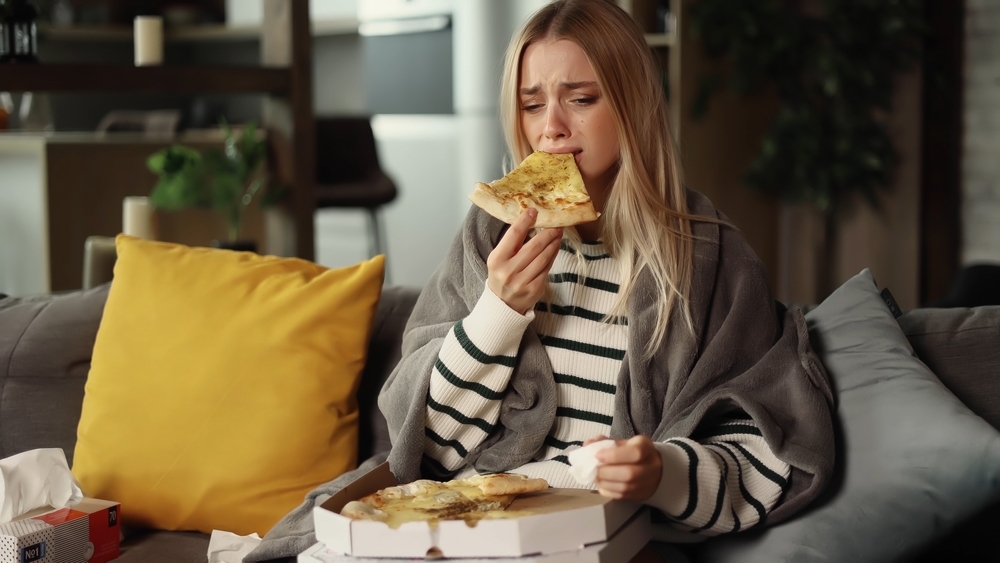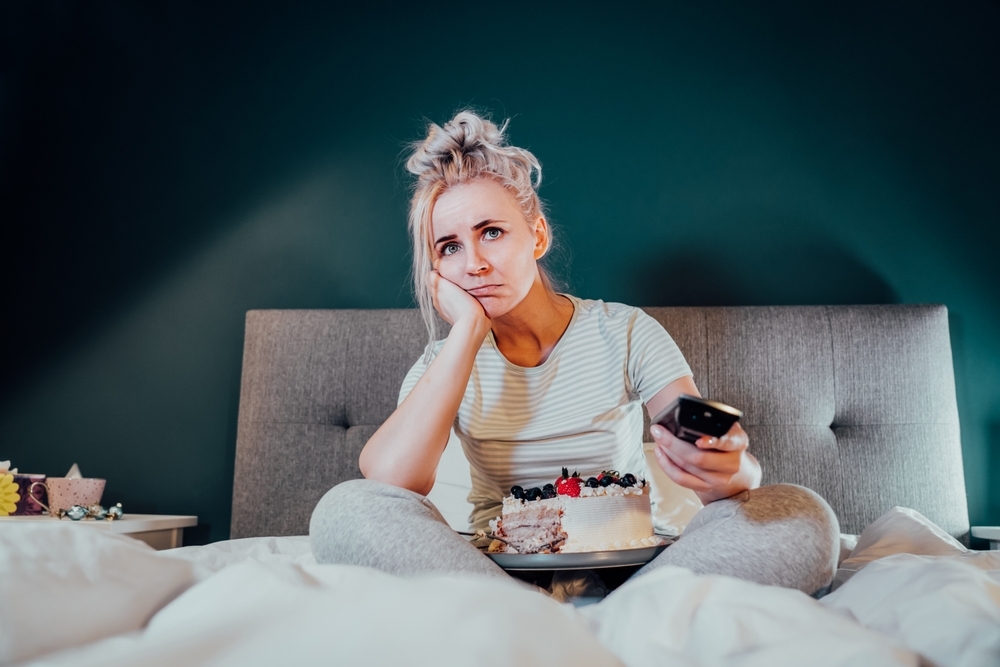Last Updated:
May 1st, 2025
It is estimated that more than 1.25 million people in the UK suffer from an eating disorder. Factors contributing to disordered eating run deep, from childhood habits and attitudes towards food to how our culture suggests what we should eat to be “beautiful.”
We’ll examine some of the most pervasive influences our society has on our eating habits and how this leads many to disordered eating. We hope to give you insights on easing societal pressures and developing a healthier relationship with the food you eat and your body image.
How are eating disorders defined?
Eating disorders are defined as “behavioural conditions characterised by severe and persistent disturbance in eating behaviours and attitudes towards food.” Eating disorders are complex mental health conditions that have deep ramifications on long-term health and vitality.
Living with an eating disorder creates a progressively distorted view of the sustenance needed for survival. An unnatural perspective on nutrition and energy intake can have catastrophic consequences.
Our understanding and ability to classify eating disorders have evolved in recent years, some of the most prevalent being:
- Anorexia nervosa: Anorexia nervosa involves extreme dieting and a profound fear of weight gain. Sufferers will regularly self-starve, usually to a dangerous degree of 15% or more of ideal body weight.
- Bulimia nervosa: People with bulimia usually have a more typical weight (BMI of between 18.5 and 24.9) but engage in the dangerous cycle of binging and purging. A person suffering will episodically binge on large amounts of food, accompanied by strong feelings of the loss of control over their eating. It is common to self-induce vomiting then or use laxatives to “purge” the body.
- Binge eating disorder: Unlike bulimia, binge eating disorder doesn’t involve purging. People with a binge eating disorder are typically obese and eat food in a shorter amount of time compared with others. People with binge eating disorder report feeling disconnected from themselves during a binge, sometimes unable to remember what they’ve eaten afterwards.
What are the social causes of eating disorders?
The causes of eating disorders are complex, multi-dimensional and dependent on the cultural norms a person lives in. One country’s idea of an eating disorder might not be recognised in the eyes of citizens in a foreign land.
Some of the largest influences on the development of eating disorders include:
Almost 80% of the UK population uses social media, with an even higher number among adolescents. One study on young people who overuse social media found a link to the development of eating disorders. Indeed, it would be hard to measure social media’s ubiquitous influence through the reach of its invisible tendrils.
As one example, the mid-2000s saw a rising trend of “Thinspiration” dominating the fitness section of social media pages. Pictures of protruding rib cages, cheekbones, and sharper clavicles became a curated collection meant to inspire people about what beauty looks like. This resulted in many younger social media users being diagnosed with anorexia by healthcare professionals.
Other trends in food consumption, such as Mukbang, can encourage a person to overeat. These social media trends rarely show how the meal’s nutritional value, or lack thereof, relates to the body and affects overall health.
Outside of familial influence, our friends and peers also greatly influence what we eat. Research shows how daily social interactions directly influence unhealthy eating practices in adolescent boys and girls. As much as we might try to tell ourselves that our diet is free of peer pressure, that is simply not the case for many of us.
How can we prevent the development of disordered eating?
Tackling the rising number of eating disorder diagnoses across the country needs a multifaceted approach. Help and inspiration towards healthier eating habits may spring up from countless sources, such as home life, school, friends, relationships and mass media. While we cannot change the world, or our society at large, we may try taking our own small steps to encourage healthier diets in ourselves and others.
Some steps include:
Suffering from an eating disorder over time may lead you to convince yourself that certain foods are inherently “good or bad,” not giving enough respect to the balance needed for healthy eating. We must recognise that our bodies need diversity in nutrition, as one nutritional deficit can majorly affect the rest of the body.
Where can I find help if I have an eating disorder?
If you or a loved one is struggling with disordered eating, we understand how difficult it can feel to find help. Getting support at the right time can be the difference between a return to healthy eating and years of malnutrition.
At Banbury Lodge, we understand the complexities of eating disorders and the steps you can take to recover. We help you to develop a healthier relationship with food and yourself. Our expert team guides you into a more mindful approach to nutrition, helping you gain control over eating behaviours and improving your self-image.
Through continued therapy and support, you can reclaim control and lead a more fulfilling life filled with energy and newfound sustenance.
(Click here to see works cited)
- “How Many People Have an Eating Disorder in the UK?” Beat, www.beateatingdisorders.org.uk/get-information-and-support/about-eating-disorders/how-many-people-eating-disorder-uk
- “Frequently Asked Questions about Eating Disorders.” Johns Hopkins Medicine, www.hopkinsmedicine.org/psychiatry/specialty-areas/eating-disorders/faq
- “Binge Eating Disorder.” Beat, www.beateatingdisorders.org.uk/get-information-and-support/about-eating-disorders/types/binge-eating-disorder
- Topic: Social Media Usage in the UK, www.statista.com/topics/3236/social-media-usage-in-the-uk
- Mushtaq T, Ashraf S, Hameed H, Irfan A, Shahid M, Kanwal R, Aslam MA, Shahid H, Koh-E-Noor, Shazly GA, Khan MA, Jardan YAB. Prevalence of Eating Disorders and Their Association with Social Media Addiction among Youths. Nutrients. 2023 Nov 5;15(21):4687. doi: 10.3390/nu15214687. PMID: 37960340; PMCID: PMC10647586.
- “What ‘Thinspo’ Can Do to Your Mental and Physical Health.” The Bulimia Project, 13 Feb. 2025, bulimia.com/eating-disorders/thinspo/.
- “Eating Disorders.” National Institute of Mental Health, U.S. Department of Health and Human Services, www.nimh.nih.gov/health/statistics/eating-disorders
- Huon, G.F., et al. “Peer and Family Influence in Eating Disorders: A Meta-Analysis.” European Psychiatry, No longer published by Elsevier, 31 Aug. 2012, www.sciencedirect.com/science/article/abs/pii/S0924933812000417.
- “Co-Occurring Conditions.” NEDC, nedc.com.au/eating-disorders/types/co-occurring-conditions





